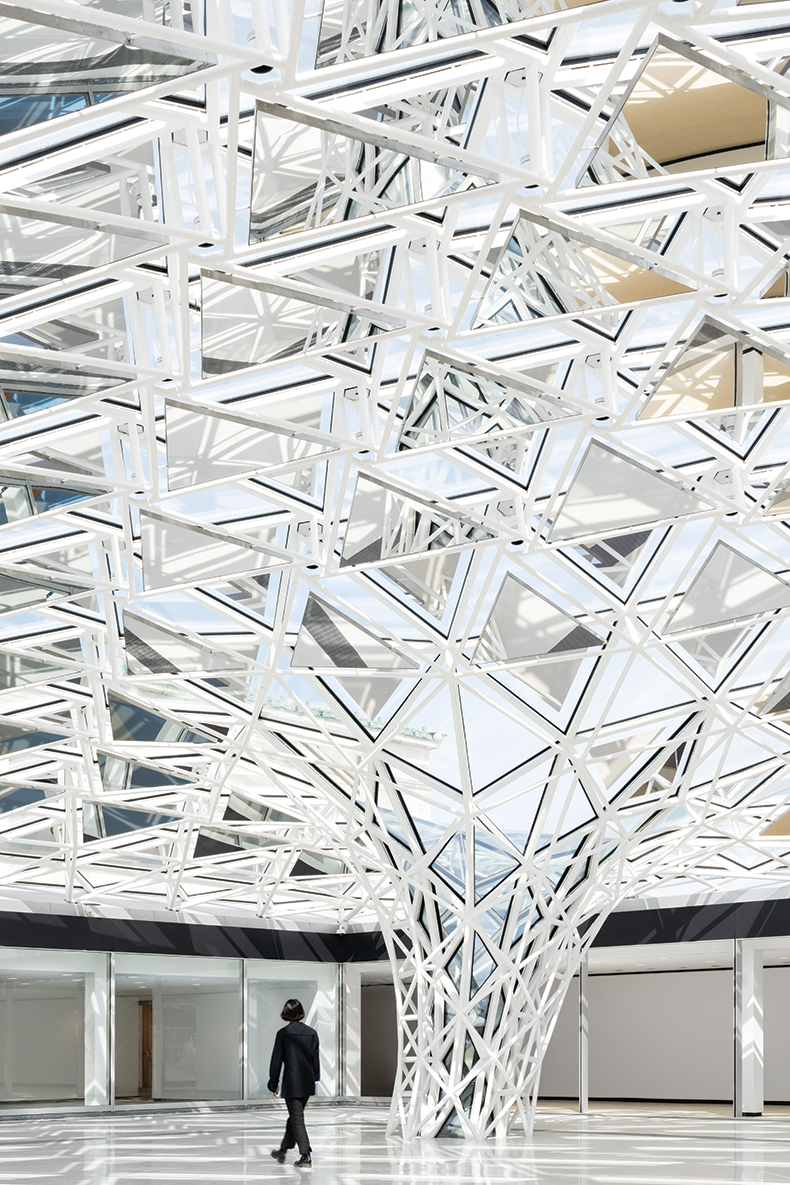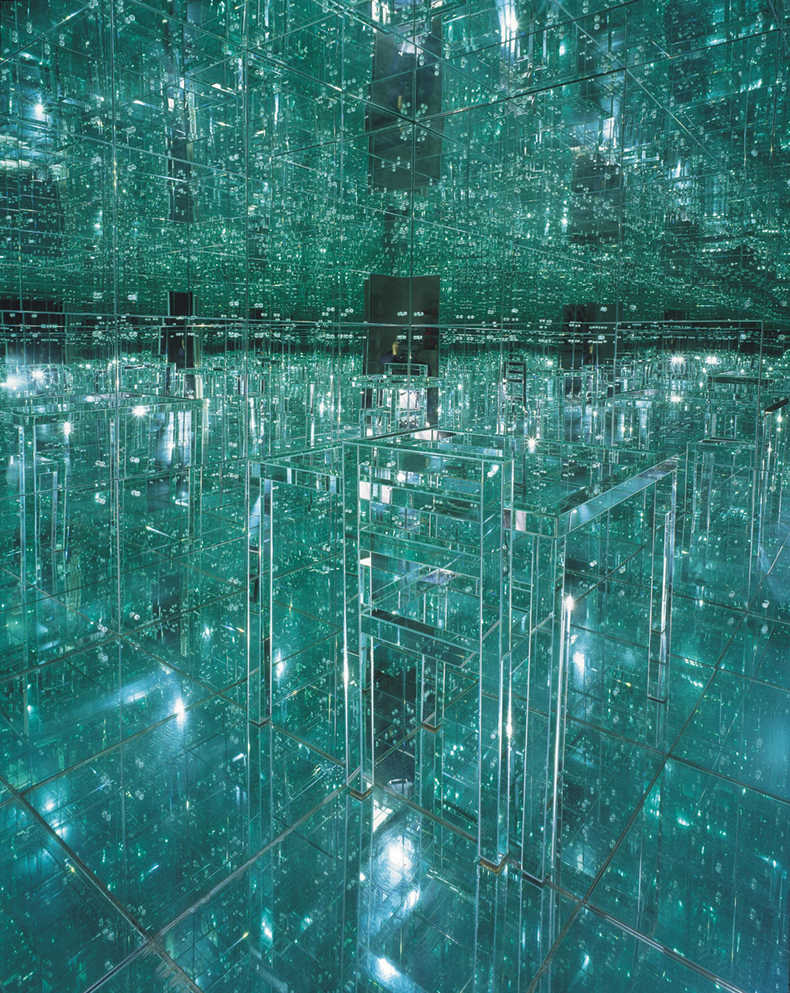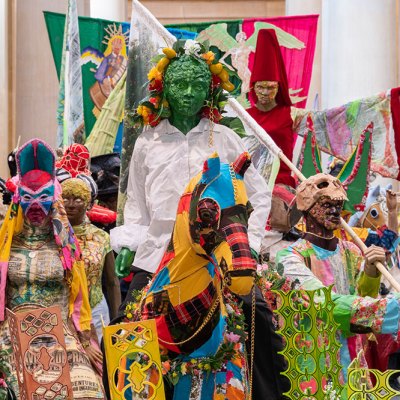From the June 2023 issue of Apollo. Preview and subscribe here.
When Thomas Le Clear moved to New York City in 1839, he was, according to one contemporary, ‘an almost penniless stranger’. But the young man, he was then in his early twenties, got some training as a painter, began to exhibit, and by 1847 he was ready to bet his luck on a new city that was rising fast in far upstate New York, the city of Buffalo. Le Clear’s move went well. He was quickly noticed, found wealthy patrons for his portraits, and became a founding member of the Buffalo Fine Arts Academy.
Today, Le Clear’s painting Buffalo Newsboy (1853) is a local favourite in the institution that grew from that academy, the Albright-Knox Art Gallery. On 12 June, after a three-year closure, the museum will reopen as the impressive and expanded Buffalo AKG Art Museum. Buffalo Newsboy depicts a rosy-cheeked lad sitting on a box at the corner of a street, against a backdrop of a wall plastered with posters, the traces of a busy commercial city. That a young painter like Le Clear should have left New York City to seek his fortune in Buffalo also tells you how up and coming it was in the 19th century.
Buffalo sits on the border with Canada and on the shores of Lake Erie. At the beginning of the 19th century, it was a small trading outpost of some 5,000 people but it began to boom when, in 1825, the Erie Canal opened and linked the Hudson River with the Great Lakes. Buffalo sat at its terminus, and this happy position enabled it to become a vital inland port. The riches paid for Frederick Law Olmsted, the creator of Central Park, to lay out the sprawling Delaware Park, which stretches across the north-east of the city and encompasses the museum’s campus. It built beautiful Arts and Crafts houses, among them the extraordinary, and now miraculously restored Martin House (1905), by Frank Lloyd Wright. Enough money poured into a museum to allow it to rival any other regional city in Europe or the United States. Each subsequent generation brought a new major patron who donated to the art museum, and the institution honoured them by taking on their names: first that of the industrialist John J. Albright, and later that of the corporate leader, Seymour H. Knox. Their wealth helped purchase paintings by Hogarth, Reynolds and Gainsborough, now the earliest works in the collection. The museum also invested in modernist works by Picasso, Matisse and others. And, as the town grew in size and strength, its boosters kept on pouring more money into the art of the day. They picked up masterpieces along the way: Giacomo Balla’s Dynamism of a Dog on a Leash (1912), Frida Kahlo’s Self-Portrait with Monkey (1938), and Gauguin’s The Yellow Christ (1889) and Spirit of the Dead Watching (1892).
The city was at its peak in the 1950s, ostensibly, at least, with a population of more than half a million. It’s no accident that the museum is renowned for its collection of mid-century abstract works. During my visit in mid April, before the reopening, I am particularly struck by The Liver is the Cock’s Comb by Arshile Gorky (1944), a painting often seen as inaugurating Abstract Expressionism, and which seems much more densely, energetically compressed than I’d previously imagined, its surface enlivened with a fizzing graphic vivacity. Another highlight, Convergence (1952) by Jackson Pollock, reveals an almost liquid surface, with milky pools of white and streaks of blue. The famously irascible Clyfford Still formed such a strong relationship with the then director Gordon Smith that he eventually donated 31 works to the museum, making it the largest holder of the artist’s work apart from the Clyfford Still Museum in Denver.
The Liver is the Cock’s Comb (1944) Arshile Gorky. Buffalo AKG Art Museum, Buffalo, New York. Photo: © Estate of Arshile Gorky/Artists Rights Society (ARS), New York

When the Buffalo AKG opens, it will celebrate Still’s gift once more by putting all of the works it has by him on view. This is enabled, to a large degree, by the expansion, which has brought the museum a further 30,000 sq ft of exhibition space. Chief curator Cathleen Chaffee and her team can also display a much fuller chronological survey that will now unfold across the museum’s original, elegantly classical structure of 1905 (now named the Wilmers Building) and extend, at least in this opening hang, across the second floor of the new, techno-modern Gundlach Building. The narrative will be all the smoother thanks to a meandering, glazed and enclosed bridge that will connect the Wilmers and the Gundlach Buildings.
The Albright-Knox, now the Buffalo AKG, may have an impeccable pedigree, but I don’t know many people who live in New York City who have visited it. One reason is Buffalo’s reputation, which has declined along with the city’s fortunes as deindustrialisation has taken its toll. Another reason is much simpler: I had to fly. New York State is very large and driving to Buffalo would likely take me eight hours or more. Downstate city dwellers also tend to think of ‘upstate’ as that bucolic realm of second homes within two or three hours’ drive; the rest of the state we dismiss as practically Canada.
There are a lot of people in Buffalo who want to change the city’s reputation, but there are also many Buffalonians behind this project who have made their fortune elsewhere, but are still rooting for their home-town. That the museum is opening now owes a good deal to the generosity of Jeffrey E. Gundlach, the 63-year-old financier whose name is on the new wing. His donation of $65m provided the catalyst for a fundraising effort totalling $230m. It also involved the auctioneer and consultant (and Buffalo native) Amy Cappellazzo, who helped structure the terms of his gift, and the governor of the state of New York, who backed the project.
The man in charge of the Buffalo AKG, however, is no local. Its Finnish director, Janne Sirén was hired away from the Helsinki Art Museum in 2013 to lead the already planned expansion. Sirén attended university in Massachusetts and completed a PhD in New York, while remaining very much a Finn: he wrote his doctorate on the work of his great-grandfather, Akseli Gallen-Kallela (1865–1931), a prominent Finnish painter whose work was important in defining the young nation’s identity.
Sirén came to Buffalo with some experience of steering development, having been involved in the negotiations to open a branch of the Guggenheim in Helsinki, a move that was eventually vetoed by city authorities. On the afternoon of my visit, he dons a hard hat and guides me around the Gundlach Building, over which a battalion of construction workers are still labouring. He bounds up stairs and hails many of the builders by name as he goes. He knocks on walls, feels floors to see if they are dry, points out details in the glazing – and draws my attention to an engine room stuffed with machinery and woven with pipework. I remark on the new underground car park: he reels off costs and stats. At the time of visit, the opening has been delayed by nearly three weeks, which Sirén attributes to the effects of the winter storm that pummelled Buffalo for four days over Christmas, killing nearly 40 people.
Sirén is indifferent about whether the ‘G’ in Buffalo AKG stands for ‘Gallery’, from the old name, or ‘Gundlach’, and he says Gundlach isn’t concerned either. What the financier was concerned about is having his hometown flagged in the museum’s new name.
Sirén’s relationship with Gundlach came almost by chance: the museum mailed news of its redevelopment plans to his mother, his mother sent them on and, one evening in April 2016, Sirén’s phone rang. It was Gundlach offering help. The help came in the form a series of complex requirements – Gundlach was insistent that both private and public money bought into the plan and that his donation be matched – and involved every layer of public government. For his part, Sirén managed to raise $103million in under 12 weeks. He points out that the hard slog of community engagement was key. The pump was already primed; Sirén just had to ask.
Sirén likes to say that the Buffalo AKG is ‘artist-centric’. The claim feels stretched, at least compared to the work of more grass-roots institutions like PS1 in New York, which grew out of the alternative space movement in the 1970s, or even the Whitney Museum of American Art, which grew out of Gertrude Vanderbilt Whitney’s exhibition programme and still retains a role as a platform for younger American artists. But Sirén points to the Buffalo AKG’s fast acquisitions of artists’ work: Warhol’s 100 Cans, painted in 1962, was purchased by Seymour Knox, who gave it to the museum the following year. Sirén also underlines the institution’s direct commissioning of artists. This is clear in the new permanent installations that will be unveiled at the opening, including a project by Olafur Eliasson, and murals by Firelei Báez and Miriam Bäckström. But it’s also revealed if you take a trip beyond the museum to visit the many public art projects that it funds across the city. The Buffalo AKG is the only North American museum with its own independent public art department, and that has helped generate a lot of local good will.
Sirén also likes to say that the institution is ‘the oldest contemporary art museum in the United States’. That claim is built mostly on its origins: the Buffalo Fine Arts Academy, as it was then known, was inaugurated in 1862, when there were only five other major museums in the United States. But there’s some spin here too, a desire to pitch the museum to the expanding audiences for modern and contemporary work. Arguably, this desire to refocus on the new predates Sirén’s tenure, to at least 2007, when the museum decided to deaccession some 200 antiquities and pre-modern works that were felt to be outliers in the collection. The decision was heavily criticised, a reaction that seems to have surprised many in the museum at the time. It’s clear that the Albright-Knox’s strengths lay in Western painting and sculpture after the 18th century and that its holdings outside that field could not allow it to claim to be an encyclopaedic museum. The sales at Sotheby’s raised $18m, which went towards increasing the endowment fund for acquisitions But attitudes to deaccessioning were tougher in that time, and they have only softened in recent years in response to the financial problems brought about by the financial crash of 2008 and later by COVID-19.
View of Common Sky (2022) by Olafur Eliasson and Sebastian Behmann of Studio Other Spaces in the Ralph Wilson Town Square. Photo: Marco Cappelletti; courtesy Buffalo AKG Art Museum, OMA, Studio Other Spaces and Cooper Robertson

The character of the improvements at the Buffalo AKG are also in step with its desire to be a centre for contemporary art. The new Gundlach wing is central here. Designed by Shohei Shigematsu, a principal in the New York office of Rem Koolhaas’s OMA, it’s a generously glazed structure that sits on a lawn to the side of the Wilmers Building. It is a crouched form hugging the ground, a structure with muscular bulk but without apparent weight. Sirén likens it to a Rubik’s Cube wrapped in cling film. The metaphor is awkward but vivid, and it highlights how a flexible cube of galleries stands inside its glass tent. Someone else describes the building to me as a terrarium, or at least an inverted one, in which visitors may stroll within and observe the parkland without.
Shohei Shigematsu designed a new building at the Musée national des beaux-arts du Québec, and the Gundlach borrows some of its key elements, including an emphasis on glazing and a sweeping, coiled staircase. But the Gundlach’s transparency also refers to the museum’s existing structures. Buffalo’s first major extension, in the early 1960s, was designed by Gordon Bunshaft of Skidmore, Owings and Merrill. It’s a severely minimal, cubic form, where tinted windows make it appear look from outside like a closed black box, yet by night it can be illuminated like a lantern from within. Sleek and enigmatic when it was first completed, the Knox Building came to seem hermetic in later years, compounding a series of other changes that made the campus feel uninviting to outsiders. So, in the new designs, much effort has been put into throwing the gates wide open. Indeed, that was a starting principle of the design process, as the museum decided not to hold a design competition, but instead to search for what Sirén describes as a ‘partner’. It chose a candidate on the basis of the ideas the architect generated, rather than committing to a single design and began a process of community consultation. Staff at the museum commended Shigematsu for his involvement in this, as he flew up to Buffalo more than a dozen times to attend neighbourhood meetings and pitch the project, with Sirén by his side. The original proposal was to construct a tall building on top of an existing courtyard adjoining the Knox Building. This met with opposition, so a separate structure was designed, and the courtyard was instead covered with a sculpture titled Common Sky (2022), designed by Olafur Eliasson and Sebastian Behmann of the Berlin-based Studio Other Spaces. It’s a shimmering canopy of glazing and mirrors that seems to rotate and descend at one point, like a typhoon, to touch the floor of the courtyard. It creates what the museum describes as a town square.
Installation view of Mirrored Room (1966) by Lucas Samaras at Pace in New York in 1966

The square will be free to enter, as will another long-time community favourite with a similar kind of appeal, Lucas Samaras’s Mirrored Room (1966), a very early example of the immersive art so popular in museums today. Mirrored Room has been such a popular attraction over the years that Chaffee and her team decided to reinstall it in a display incorporating locals’ photographs of their own visits to the room over many decades. Buffalo may be, relatively speaking, an impoverished town, and that poverty has created stark divisions, but it has some things that all Buffalonians can agree on, and Sirén hopes they can inspire more converts like himself. ‘This is a city of architectural marvels,’ he says to me. ‘Where do you get to see this number of Frank Lloyd Wrights, of Sullivan, Richardson. The city’s urban plan is one of the finest in America. I’ve lived in 14 cities in seven countries, and I’ve never been as happy anywhere as I am here.’ That may all be true, but with the Albright-Knox reborn as the AKG, a major part of Sirén’s job is done.
The Buffalo AKG Art Museum reopens on 12 June.
From the June 2023 issue of Apollo. Preview and subscribe here.


